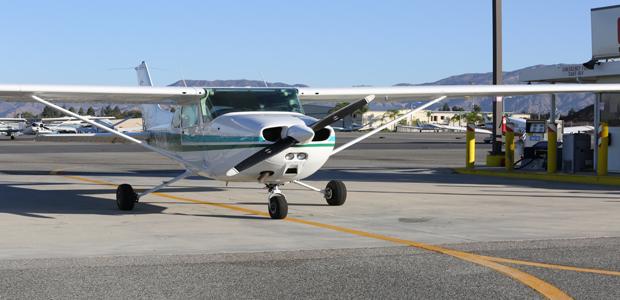The 85-year-history of the aviation department will be celebrated with the purchase of a Cessna 172P, which will increase student pilot opportunities by 30 percent.
The department’s purchase of the new aircraft to accommodate student demand for flight training is set to be finalized by the end of September. Acquiring a private pilot license at Glendale college is less expensive because the campus is not a for-profit institution and students can earn college credit for their flight hours.
The cost of private pilot training at GCC is $8,000 compared to the average $10,000 to $12,000 a student will pay at a for-profit pilot training school.
The new addition of a 1983 Cessna 172P plane will join the two Cessna 172Ns already active in the college’s pilot training program.
According to Curtis Potter,
department chair of the aviation and administration of justice departments, the new Cessna will be the first plane purchased since 2003.
The department’s budget for the new plane was $65,000; however, it ended up costing the department $62,000, and the money was taken from reserve funds from its flight training account.
The department searched through several Internet databases to find five possible candidates that would fall under their budget.
The owners of the first two planes would not negotiate a lower price and the other two had been sold by the time Potter asked about them. The fifth and final plane was located within a convenient
distance at Agua Dulce Airport.
“It was a big help to find one here in Southern California,” said Potter.
The new plane went through a thorough pre-buy inspection by a mechanic to ensure all parts were in working order and in airworthy condition. Potter also test flew the plane.
“One of the things I was looking for was a plane we could put in service immediately,” he said.
“We’re not going to paint it first,” Potter said. “We’re just
going to put it out there and let the kids start flying it.”
The new P-model is more than 30 years old and is a slightly more advanced model than the N-models already in service with similarities in airframe and performance.
“We wanted to keep it pretty much the same from the students’ standpoint for a better transition,” said Potter.
The aviation department officially purchased its first plane in 1998 and followed up with another N-model five years later in 2003. The new addition will join these two planes at GCC’s hangar at Whiteman Airport in Pacoima.
According to Potter, the N-models have around 10,000 hours of flight time each, whereas the
P-model only has around 4,500 hours of flight time.
“The life of an airplane is much longer than that of a car,” said
Potter.
The aviation department has a history rooted in years previous to World War II, when the U.S. Navy stored a dismantled Martin observation bomber monoplane in the school’s Mechanical Arts Building in 1929.
Harry Huston Crawford, an
engineer who served as a balloon pilot with the U.S. Army Air
Service during the Second World War, was hired to teach a course in how to use the Martin.
During its first year, the program consisted of only one course: Aviation Fundamentals. It is significant in this period of history that among the 23 enrolled students, three of them were women, which was not typical of the era.
The generous donation of an American Eagle biplane in 1931 increased academic enthusiasm and led to the establishment of the Aeronautics Club.
Then, in 1934, the promising aviation program was cut back completely by the Board of
Education for financial reasons.
However, the aviation department made a comeback in 1938 when the government initiated the Civilian Pilot Training Program (CPTP).
GCC and more than 200 other colleges across the country were selected for the CPTP to train pilots in the midst of impending war. This initiated the Aeronautical Department in 1939.
By 1975, aviation classes had grown to such size, that a contract was awarded to the Steed Brothers Construction Co., to begin construction of what is now the
Aviation/Arts building.
In 2005, school officials voted to drop the FAA-certified 60-year-old mechanics course due to declining enrollment and rising cost.
Despite declining enrollment, recent years have revived student aviation interests.
On average, 23 students are enrolled in each pilot training class. However, with the help of the new Cessna, classes will be able to hold 23 to 30 students.
The new plane is set to be in operation by early October.


